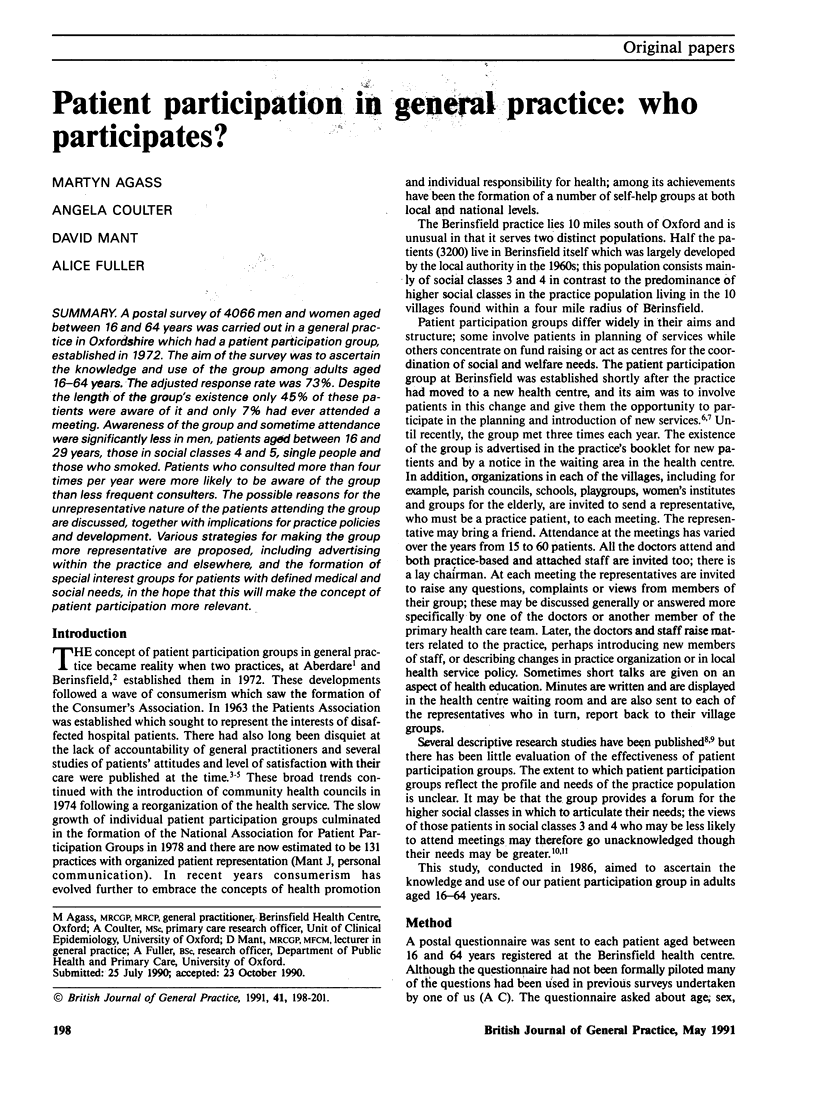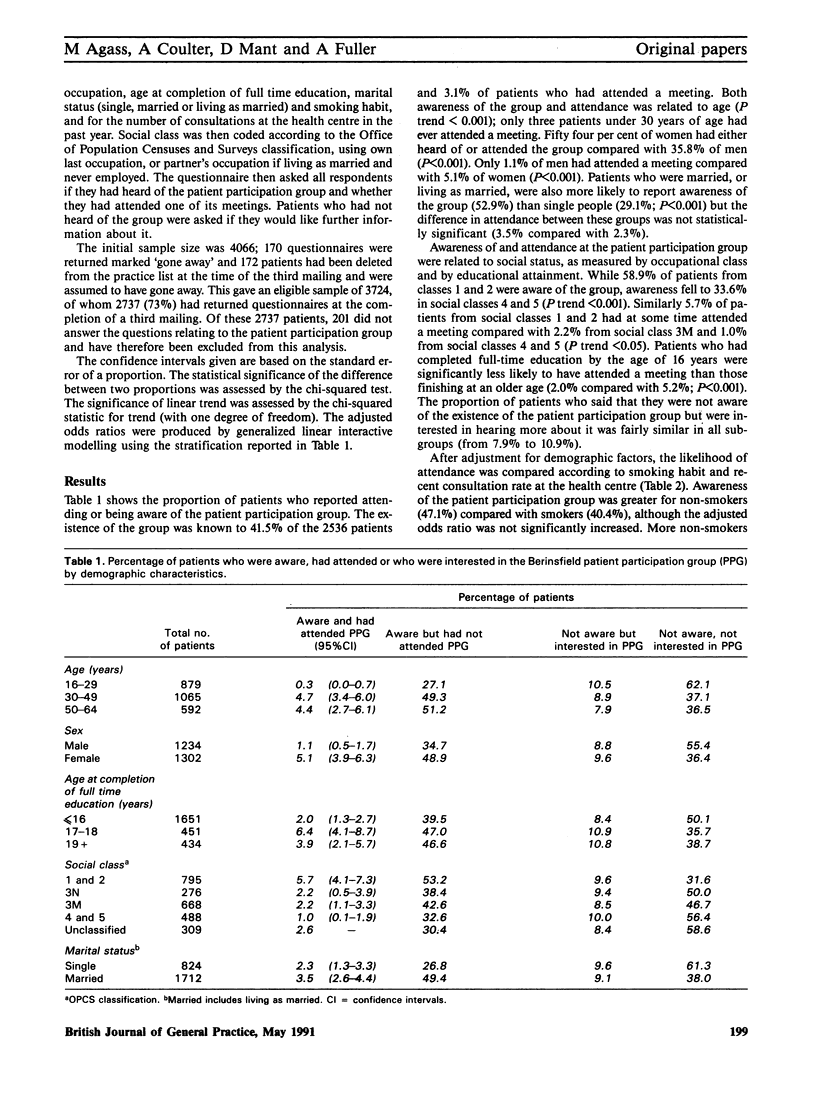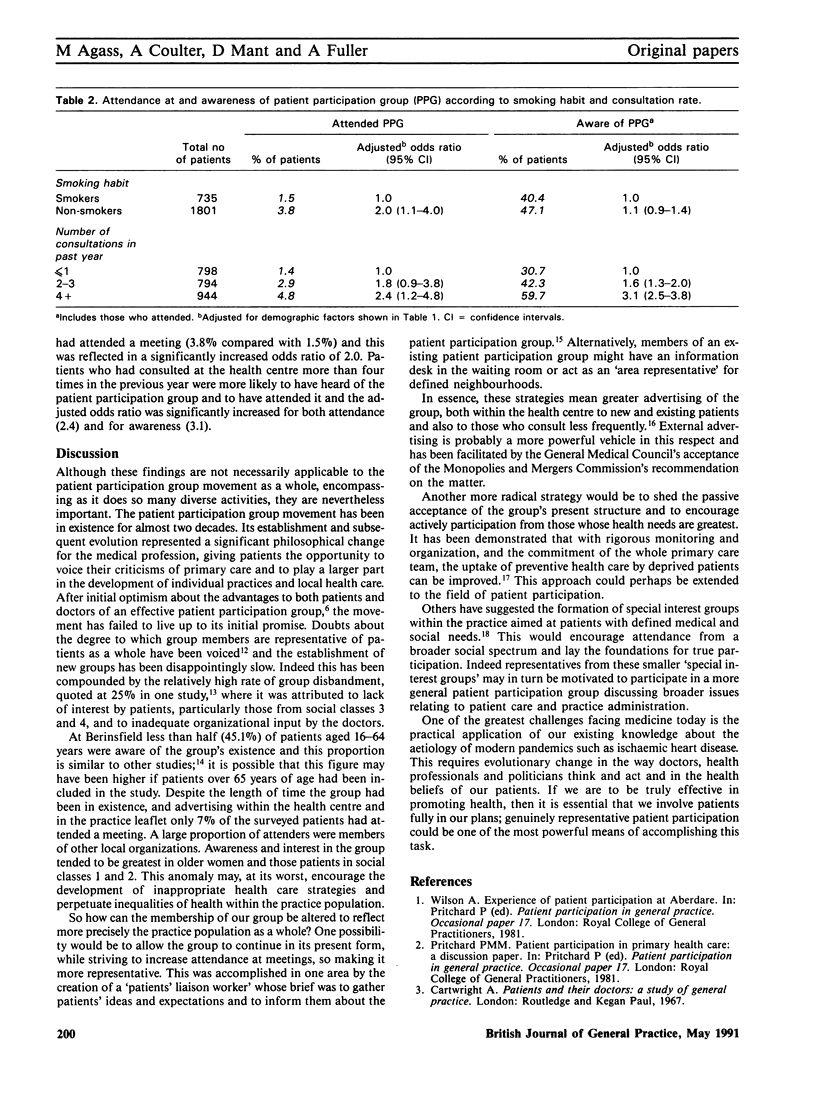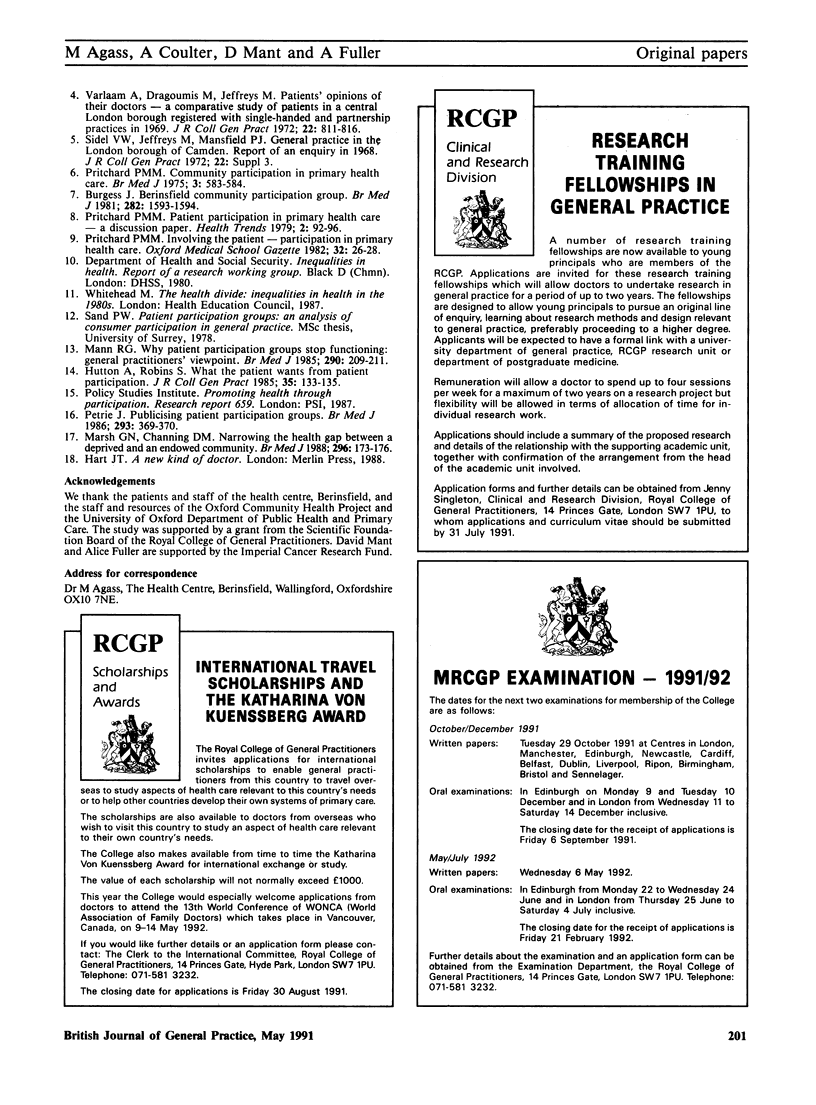Abstract
A postal survey of 4066 men and women aged between 16 and 64 years was carried out in a general practice in Oxfordshire which had a patient participation group, established in 1972. The aim of the survey was to ascertain the knowledge and use of the group among adults aged 16-64 years. The adjusted response rate was 73%. Despite the length of the group's existence only 45% of these patients were aware of it and only 7% had ever attended a meeting. Awareness of the group and sometime attendance were significantly less in men, patients aged between 16 and 29 years, those in social classes 4 and 5, single people and those who smoked. Patients who consulted more than four times per year were more likely to be aware of the group than less frequent consulters. The possible reasons for the unrepresentative nature of the patients attending the group are discussed, together with implications for practice policies and development. Various strategies for making the group more representative are proposed, including advertising within the practice and elsewhere, and the formation of special interest groups for patients with defined medical and social needs, in the hope that this will make the concept of patient participation more relevant.
Full text
PDF



Selected References
These references are in PubMed. This may not be the complete list of references from this article.
- Burgess J. Patient participation: Berinsfield Community Participation Group. Br Med J (Clin Res Ed) 1981 May 16;282(6276):1593–1594. doi: 10.1136/bmj.282.6276.1593-a. [DOI] [PMC free article] [PubMed] [Google Scholar]
- Hutton A., Robins S. What the patient wants from patient participation. J R Coll Gen Pract. 1985 Mar;35(272):133–135. [PMC free article] [PubMed] [Google Scholar]
- Mann R. G. Why patient participation groups stop functioning: general practitioners' viewpoint. Br Med J (Clin Res Ed) 1985 Jan 19;290(6463):209–211. doi: 10.1136/bmj.290.6463.209. [DOI] [PMC free article] [PubMed] [Google Scholar]
- Marsh G. N., Channing D. M. Narrowing the health gap between a deprived and an endowed community. Br Med J (Clin Res Ed) 1988 Jan 16;296(6616):173–176. doi: 10.1136/bmj.296.6616.173. [DOI] [PMC free article] [PubMed] [Google Scholar]
- Petrie J. Publicising patient participation groups. Br Med J (Clin Res Ed) 1986 Aug 9;293(6543):369–370. doi: 10.1136/bmj.293.6543.369. [DOI] [PMC free article] [PubMed] [Google Scholar]
- Pritchard P. M. Community participation in primary health care. Br Med J. 1975 Sep 6;3(5983):583–584. doi: 10.1136/bmj.3.5983.583. [DOI] [PMC free article] [PubMed] [Google Scholar]
- Varlaam A., Dragoumis M., Jefferys M. Patients' opinions of their doctors--a comparative study of patients in a central London Borough registered with single-handed and partnership practices in 1969. J R Coll Gen Pract. 1972 Dec;22(125):811–816. [PMC free article] [PubMed] [Google Scholar]


